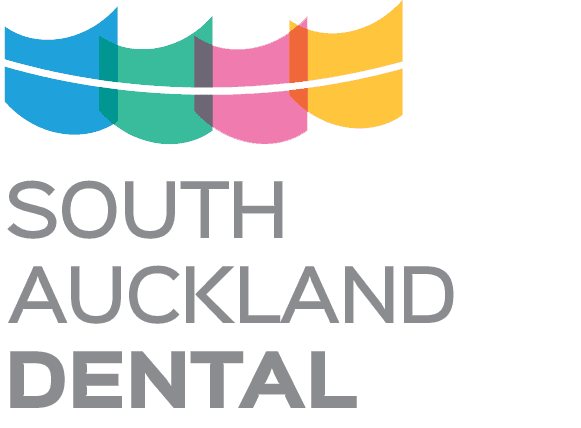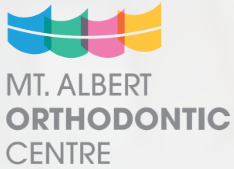First Consultation
What to Expect
Our appointment schedule is carefully managed to allow us to provide you with orthodontic treatment in an efficient and relaxed environment.
At your first visit, we conduct a thorough examination of your facial structure, bite, alignment of your teeth, health of the soft tissues, and jaw function. We also find out what your expectations are and what you wish to achieve through orthodontic treatment.
We take a series of measurements and discuss what orthodontic treatment is appropriate for you.
We encourage you to ask questions as well, such as:
● Do I have a condition that orthodontics can address?
● Can orthodontics enhance my teeth, jaw, and facial profile?
● Is treatment needed now, or should treatment be delayed until further growth and/or tooth eruption have occurred?
● What treatment procedures will be used in my circumstances?
● Do any permanent teeth need to be removed?
● How long will treatment take?
● What investment is required?
● What are my payment options?
Prior to your first visit, we require you to fill out a health history form, Form A.
You can also assist us by bringing along any panoramic x-rays taken by your dentist within the past six months to your first visit.
If treatment is needed, diagnostic records are collected at a second appointment. These comprise digital photographs of the face and teeth and dental impressions to construct 3D digital study models/plaster study models of the teeth. With these records, we will be able to provide a detailed and accurate assessment, as well as a personalised treatment plan. This will include a description of the appliances to be used in treatment, a discussion about the risks and limitations of orthodontic treatment as part of the informed consent process, the length of treatment, and the costs and payment options available.
*Most people in our experience have found this first appointment to be most useful when the key decision maker is there. This means that the decision to proceed with treatment can occur at this appointment, and then full planning records can be taken at this appointment rather than having to relay the information to the decision maker.
Treatments
Orthodontic Treatment
Orthodontic treatment takes some time, on average about 10 to 24 months for active treatment. Adult treatment time is generally longer. The length of orthodontic treatment depends on the severity of the problems, the patient’s growth, and the level of cooperation. More severe problems take longer and require more cooperation.
The mouth is very sensitive, and the introduction of any appliance means a period of adjustment must be expected.
Occasional discomfort may be experienced after the adjustment of braces or plates. The level of discomfort varies widely, but most can be remedied by over-the-counter remedies.
Almost all treatments go as planned, but results cannot be guaranteed, and to achieve the best possible result, patients must adhere to the recommended treatment plan and be fully committed to doing their part both during the active and retention phases of treatment.
The amount of time spent with the orthodontist is only a fraction of the overall treatment time. The orthodontist is responsible for planning, coordinating, and initiating tooth movements. The actual movement of the teeth takes place continuously during normal activities between your visits.
Cooperation of patients (parents) is therefore essential and means
• Keeping all appointments as scheduled
• Wearing all appliances, elastics, headgear, retainers, etc., as instructed
• Avoiding activities and foods that could damage or dislodge appliances
• Maintaining excellent oral hygiene
• Maintaining a good, balanced diet
• Attending your dentist or school dental therapist regularly during treatment
Phase 1
Placement of Braces
Braces fitted on upper and lower teeth take 80 minutes; this procedure is painless, and no form of anaesthetic is necessary. Several hours after the braces are fitted, it is normal to require mild pain relief (e.g., Panadol) for a few days as the teeth mobilise to allow movement during orthodontic treatment.
Appliance Adjustment
Approximately 4-10 weekly; this may vary depending on individual treatment.
Average Treatment Time
This will be estimated for an individual and depends on the difficulty of the problem being treated and the patient’s response to treatment, including their cooperation, following instructions, and attending scheduled appointments.
Phase 2
Retention
This is the supervised retention period of 12 months and commences when the braces are removed; the removal of braces is a painless procedure. Retainers are provided and used to maintain the teeth in their new position. Retainers are fitted and checked 4 times a month during the 12-month period. Retainers are removable appliances and bonded wires behind the upper and lower front teeth.
Final Appointment
After 1 year of retention visits, your orthodontic treatment and monitored retention can be considered complete. Continued retainer use is mandatory for long-term retention.
FAQs
Do you charge interest?
No, we do not charge interest on payments.
Do I still need to see my dentist?
Yes, regular checkups are important. Clean, healthy teeth are essential for your final result and the long-term health of your teeth and gums.
Do you have appointments out of school hours?
We’re going to be seeing a lot of each other as you go through your orthodontic treatment. Once we’re underway, you’ll need to come in fairly regularly for adjustments and checks.
We do our best to work around your school or work commitments, but unfortunately, it’s almost impossible to undertake a full course of orthodontic treatment without some daytime appointments. We do try to be as flexible as possible and to schedule routine adjustment appointments for after school. Longer visits and some key appointments, if required, are usually scheduled during the day.
Can I come in my lunch hour?
We provide adjustments both late morning and early afternoon. Our day is structured to provide adjustment appointments at convenient times throughout the day, allowing most patients' school/work days to have as little interruption as possible. Our longer appointments are scheduled within school and working hours.
What is life with braces like?
Starting out: The good news is that having your braces put on is completely painless, but the first few days of wearing them can be a bit achy. The aching is caused by the pressure of the teeth being pulled, but it subsides as they begin to shift. It’s quite normal for the soreness to last for two to three days, but you can take over-the-counter painkillers such as paracetamol to reduce the discomfort. Warm drinks also help.
The inside of your mouth is very sensitive, and although the braces are designed to be as comfortable as possible, some people find that the brackets scratch the insides of their lips and cheeks. Your mouth will get used to it fairly quickly, but in the meantime, you can mould some soft wax over the irritating parts. The smooth wax feels good on a sore spot, and it can even be flavoured!
Keeping clean: Braces provide great places for food to hide and get stuck, so while you’re going through orthodontic treatment, it becomes even more important to look after your teeth and gums. You really want to keep plaque from building up around the gumline, as this can lead to gum disease.
Try to brush after every meal; we’ll show you how (it’s a bit harder with all those wires!). If you’re out for lunch and forget your toothbrush, have a good rinse-and-spit to dislodge any food. It's best to visit your dentist every six months while your braces are on and avoid sugary foods and fizzy drinks.
Taking care of your braces: Having braces doesn’t mean you have to stop eating most foods, but you do have to be aware of what you eat. Hard foods such as apples and carrots can snap the brackets off when you bite into them, and sticky, chewy foods like toffee can stick to your braces. So be careful with nuts, avoid popcorn, chop hard foods into small pieces and chew slowly with your back teeth, and slice corn off the cob with a knife.
If you play sports, it’s also very important to protect your mouth while playing. Let us know, and we’ll provide you with a complimentary mouthguard to fit over your braces. A custom-made mouthguard is an additional cost.
Breakages and repairs: You’ll have appointments every few weeks to check up on and adjust your braces. But if you break something, don’t wait for your next appointment! We need to repair your braces as soon as possible, because broken fixtures can alter the pressure on your teeth and result in you needing to wear braces for longer. The broken parts can also hurt the inside of your mouth. Breakages do happen, so contact us as soon as you can to arrange a repair appointment.
Resources
If you have read our
FAQs page and still have more questions, please feel free to get in touch with one of our friendly team members or visit one of the below resources.
Start your journey to a bright smile by calling South Auckland Dental & Orthodontics on






